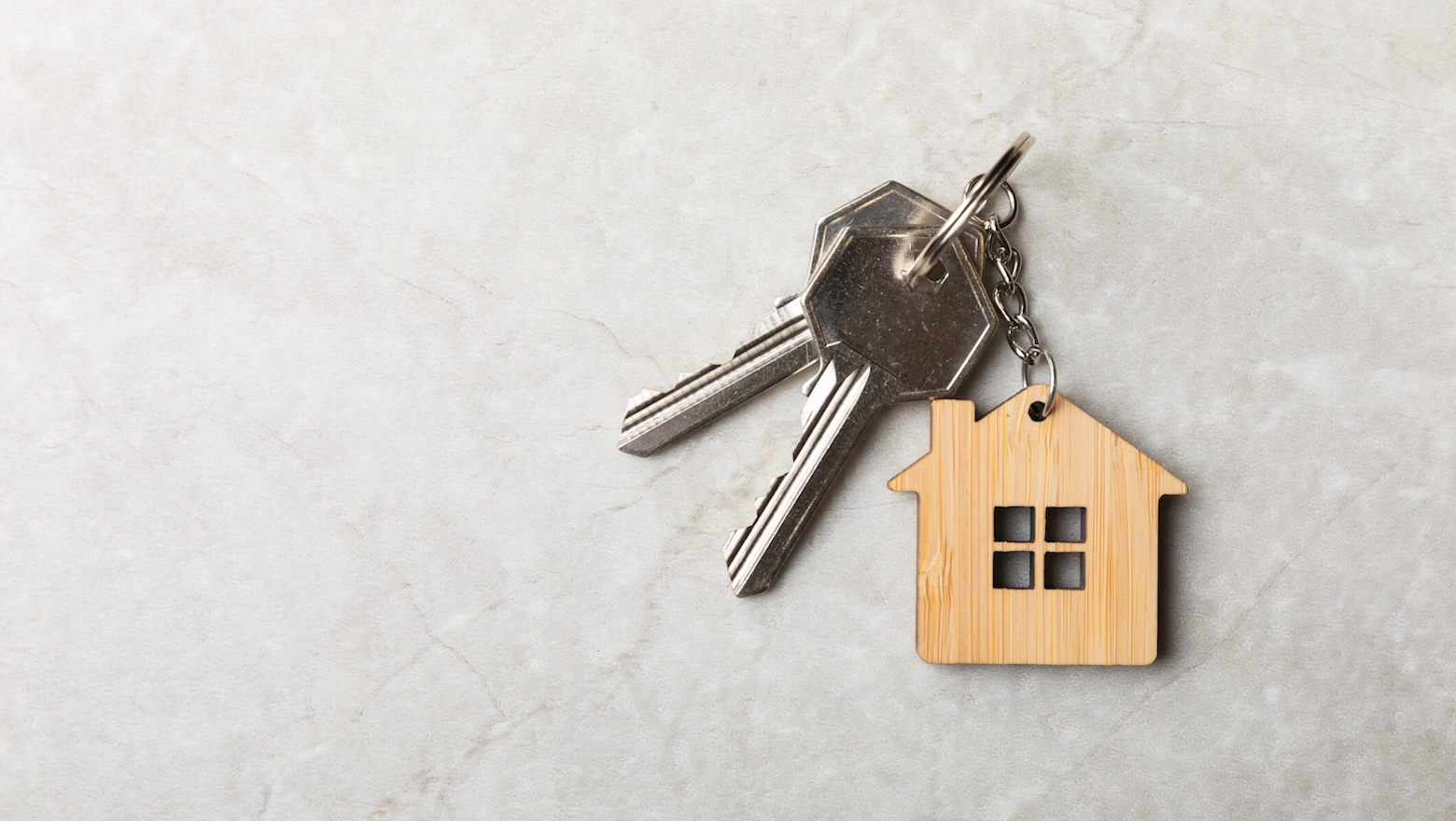How Much Is the Down Payment for a $200K House for First-Time Homebuyers?
For many homebuyers, especially those purchasing for the first time, the prospect of coughing up a five-digit down payment is the most intimidating part of the process. But the good news is, these days, it’s possible to put down far less than 20%. Depending on the loan type you qualify for, you may be able to put down as little as 3%, which translates to $6,000 for a $200,000 house.
Here’s what you need to know about the income requirements, down payment options, and other important pieces of the financial puzzle if you’re considering purchasing a home for $200,000 or so.
Key Points
• Eligible first-time homebuyers can make a minimum 3% down payment, or 3.5% with an FHA loan, on a $200,000 house.
• VA loans may allow first-time homebuyers to purchase a $200,000 house with no down payment.
• An annual income of $57,600 is recommended to afford a $200,000 house.
• Preapproval helps first-time homebuyers understand affordability and shows sellers their financial capability.
• Strategies to improve financial standing include reviewing credit, reducing debt, and exploring down payment assistance programs.
How Much Income Do I Need to Afford a $200K Home?
Among other factors, like your credit score and your available down payment, mortgage lenders do consider your income when determining what you can qualify for as a first-time buyer. But instead of enforcing one specific cut-off point for household income, most lenders use a more complicated algorithm to decide whether or not a would-be borrower can qualify.
There is, however, a quick rule of thumb that can help first-time homebuyers figure out an approximate income ballpark that will ensure you can make your mortgage payments. A long-standing financial guideline suggests you should spend no more than 30% of your gross income on your housing payment each month. Although rising costs mean this metric is harder to meet in some American cities and states than others, it’s still a good place to start.
So, consider your $200,000 potential home purchase. It’s not exactly a jumbo loan, but it still comes with costs. Using a mortgage calculator, you can get a rough idea of how much your monthly mortgage payment might be, depending on your interest rate and available down payment.
For a $200,000 home with a 3% down payment ($6,000), with an interest rate of 7%, a 30-year fixed-rate mortgage would come with a payment of about $1,300. But you’ll also need to factor homeowners insurance, property taxes, and — because you put down less than 20% as a down payment — private mortgage insurance. This means your housing costs would be in the neighborhood of $1,600 per month. In order to meet the 30% guideline, that would mean you’d need to earn about $4,800 per month, or $57,600 per year, to comfortably meet your housing payment responsibilities.
However, your lender may require a higher level of income to qualify you for the loan, depending on your other qualifying factors.
How Much is the Down Payment for a $200K House?
If you choose to put down the 20% that will keep you from having to pay private mortgage insurance, the down payment for a $200,000 house will come out to $40,000.
However, conventional loans allow well-qualified borrowers to put down as little as 3%, which is only $6,000 on a $200,000 home. You could also choose to put down an intermediary amount, such as 5% ($10,000) or 10% ($20,000).
What Are the Down Payment Options for a Home Worth $200K?
The specific down payment options that are available to you will depend on your lender, your qualifying factors (such as credit history and income), and what type of mortgage loan you opt for.
For instance, conventional loans allow well-qualified first-time homebuyers to put down just 3%, while down payments for FHA loans, backed by the Federal Housing Administration, bottom out at 3.5% for borrowers with a credit score of at least 580 (or 10% for those whose scores are as low as 500). If you obtain a VA loan (backed by the U.S. Department of Veterans Affairs), you might be able to put down nothing at all.
What Does the Monthly Mortgage Payment Look Like for a $200K Home?
As you’re thinking about how much is the down payment for a $200K house, you’ll also need to consider how the mortgage payments will fit into your budget. As noted, the best way to understand what you stand to pay monthly on a home loan is to use a mortgage calculator. The payment calculated above — $1,300 — assumes a low down payment (3%) and an interest rate of 7% before taxes, insurance, and private mortgage insurance. If, however, you put down a higher amount up front — say, 10% or $10,000 — and had an interest rate of 5%, your loan payment would go down to around $1,000 per month (again, before property insurance, homeowners insurance, and mortgage insurance).
What to Do Before You Apply for a $200K Mortgage
If you’re considering applying for a $200,000 mortgage — or any mortgage, for that matter — it’s a good idea to pull your credit history and ensure that everything on your report is accurate to your knowledge. If you have high revolving debt balances or a relatively low credit score, it may also be worthwhile to work on improving your credit score before you apply so as to attain the lowest available interest rates.
At the big-picture level, deciding where you want to buy a house is perhaps the most important step toward ensuring you’re happy in your new home. Choosing the right locale can really help lower your cost of living. While everyone knows housing prices in big cities have skyrocketed over the last decade or so, there are affordable places to live in the U.S. if you know where to look. Moving to a new city or state is a big project, but doing so can lower the average monthly expense per person by hundreds of dollars.
Finally, if the down payment is the biggest hurdle between you and your homeownership dream, be sure to check out down payment assistance programs that may help bridge the gap. Grants may be available at the state, federal, and local government levels, as well as low-interest loans.
Should I Get Preapproved Before Applying for a Mortgage?
The mortgage preapproval process helps you understand how much house you’re able to afford given your current financial situation — and also shows sellers that you’re motivated and serious. In general, getting preapproved before seriously hitting the housing market is a good idea, but keep in mind that your preapproval does have an expiration date — normally between 60 and 90 days after you go through the process.
How to Get a $200K Mortgage
From banks to credit unions to digital-first financial institutions, there are many places to get a $200,000 mortgage, whether you’re buying your first home or hoping to get better terms and save money as part of a mortgage refinance. These days, much of the application process can be done entirely online. You can prequalify and get a general sense of your borrowing power by answering a few simple questions. Seeking a lender’s preapproval requires submitting more information and financial documentation.
The Takeaway
The down payment for a $200,000 house can be as low as 3% ($6,000) or as high as 20% ($40,000) or even higher, depending on your financial situation and goals. Many homebuyers, especially first-timers, put down less than 20% on the road to their dream home.
Looking for an affordable option for a home mortgage loan? SoFi can help: We offer low down payments (as little as 3% - 5%*) with our competitive and flexible home mortgage loans. Plus, applying is extra convenient: It's online, with access to one-on-one help.
FAQ
How much should I make to afford a $200,000 house?
Using the 30% rule of thumb (your housing costs should not exceed 30% of your gross income) and assuming a housing payment of about $1,600 per month (including property taxes, private mortgage insurance, and homeowners insurance), you should make about $4,800 per month, or $57,600 per year, to comfortably afford a $200,000 house. However, your mortgage lender may have different income requirements depending on your other qualifying factors.
What credit score is needed to buy a $200,000 house?
While there’s no specific credit score floor for purchasing a home of any price, the higher your score, the better your loan terms stand to be — including your interest rate. With an FHA loan, which is designed specifically for first-time buyers who may be facing financial hurdles on their journey to homeownership, you may qualify with a score as low as 500 if you can come up with a 10% down payment. Many lenders who offer conventional loans require a minimum credit score of 620.
How much is a $200K mortgage per month?
Your monthly mortgage payment depends on many factors, including your interest rate and loan term (how long you have to pay it off). For a 30-year fixed-interest loan at a rate of 7%, with a down payment of 3%, your monthly mortgage payment on a $200,000 home would be about $1,300 before other expenses such as property taxes, insurance, and private mortgage insurance.
photo credit: iStock/Milan Markovic
SoFi Loan Products
SoFi loans are originated by SoFi Bank, N.A., NMLS #696891 (Member FDIC). For additional product-specific legal and licensing information, see SoFi.com/legal. Equal Housing Lender.
SoFi Mortgages
Terms, conditions, and state restrictions apply. Not all products are available in all states. See SoFi.com/eligibility-criteria for more information.
*SoFi requires Private Mortgage Insurance (PMI) for conforming home loans with a loan-to-value (LTV) ratio greater than 80%. As little as 3% down payments are for qualifying first-time homebuyers only. 5% minimum applies to other borrowers. Other loan types may require different fees or insurance (e.g., VA funding fee, FHA Mortgage Insurance Premiums, etc.). Loan requirements may vary depending on your down payment amount, and minimum down payment varies by loan type.
Financial Tips & Strategies: The tips provided on this website are of a general nature and do not take into account your specific objectives, financial situation, and needs. You should always consider their appropriateness given your own circumstances.
Tax Information: This article provides general background information only and is not intended to serve as legal or tax advice or as a substitute for legal counsel. You should consult your own attorney and/or tax advisor if you have a question requiring legal or tax advice.
¹FHA loans are subject to unique terms and conditions established by FHA and SoFi. Ask your SoFi loan officer for details about eligibility, documentation, and other requirements. FHA loans require an Upfront Mortgage Insurance Premium (UFMIP), which may be financed or paid at closing, in addition to monthly Mortgage Insurance Premiums (MIP). Maximum loan amounts vary by county. The minimum FHA mortgage down payment is 3.5% for those who qualify financially for a primary purchase. SoFi is not affiliated with any government agency. †Veterans, Service members, and members of the National Guard or Reserve may be eligible for a loan guaranteed by the U.S. Department of Veterans Affairs. VA loans are subject to unique terms and conditions established by VA and SoFi. Ask your SoFi loan officer for details about eligibility, documentation, and other requirements. VA loans typically require a one-time funding fee except as may be exempted by VA guidelines. The fee may be financed or paid at closing. The amount of the fee depends on the type of loan, the total amount of the loan, and, depending on loan type, prior use of VA eligibility and down payment amount. The VA funding fee is typically non-refundable. SoFi is not affiliated with any government agency.
Checking Your Rates: To check the rates and terms you may qualify for, SoFi conducts a soft credit pull that will not affect your credit score. However, if you choose a product and continue your application, we will request your full credit report from one or more consumer reporting agencies, which is considered a hard credit pull and may affect your credit.
SOHL-Q225-141




